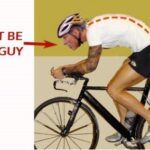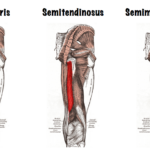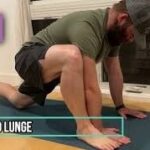Stretching has been common practice promoted for years by our coaches, personal trainers, fitness instructors, physical therapists, sports physicians, massage therapists… However, there is currently a lot of debate surrounding the benefits of stretching and the whole view of stretching is slowly shifting. Here is an update with some key questions.
Should I stretch before exercising?
The short answer is no. Static stretching (holding a position for a certain length of time) may be detrimental if performed before exercising. Several research papers have shown that it decreases performance and power, and may even make you more susceptible to injury.
Sweet! I hate stretching. So should I just go straight to exercising?
No again. Active stretching (actively bringing your joints to their maximum natural range of motion) is necessary as a warm up. Research shows that those who warm up and do active stretching are less likely to sustain injuries and tend to perform better. Active stretching involves lots of big movements that mimic moves you will be doing in your sport, in an exaggerated fashion. An example of active or dynamic stretching for runners can be found here: http://www.youtube.com/watch?v=djDqDDQl-Y4
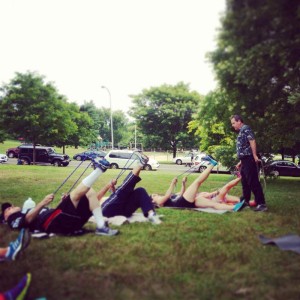
I’m so inflexible though, should I work on that outside of exercising?
The necessity of routine stretching to increase flexibility is cause for debate. On one hand, unnecessary stretching may compromise joint stability, tonus and muscle function. On the other hand, stretched muscles may be stronger, more elastic and faster.
The research findings tend to agree on the following:
1. flexibility and stability need to correlate with your sport:
For example, a pitcher will need very good shoulder flexibility to bring his/her arm far back and gather momentum. However, once the hand reaches the front of the shoulder and he/she lets go of the ball, tighter back muscles that will almost act as a sudden stop will allow for a better throw.
Another example: endurance athletes need tonus in their muscles which is achieved by having less elastic fibers rather than more. Sports that require short but explosive movements may benefit from more elasticity to jump higher, respond faster and be more compliant.
2. active stretching is the least controversial thing to do: indeed, it is less likely to be detrimental because it follows a more natural and physiological process. Forms of active stretching include dynamic stretching, AIS, PNF and ballistic stretching.
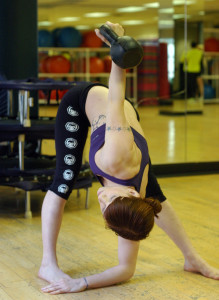
Notes:
1. The question of increasing flexibility is for someone who already has “normal” range of motion (though obviously, “normal” is variable from person to person and dependant on genetics). For example, being able to touch your toes with your legs straight while standing up is considered “normal”, and so is squatting with your heels remaining on the ground, being able to sit on your heels, being able to raise your arms straight up with arms touching your ears, and being able to touch your fingertips behind your back. If you are unable to do any of these things, then you need to stretch, regardless of your sport!
2. There are many benefits to stretching:
-it provides ease and comfort during movements (the notion of “muscle economy” is sometimes used in this context, however it is debatable whether or not better flexibility and muscle economy are correlated)
-it helps you balance out your body (if your sport is one that requires to be symmetrical)
-it improves focus and relaxation
-it can be a means of cooling down after exercising
-it participates in the healing process of a soft tissue injury
-it decreases tightness that accumulates during a workout and prevents cramps
-it is a way to help release a muscle knot
-if you have more leeway in muscle flexibility (aka, a bit more than needed for your sport’s range of motion), you might be less likely to pull it if you go over the range of motion for one reason or another (fall, fatigue, etc).
At Phila Massages, we offer AIS (Active Isolated Stretching) coupled with an analysis of your flexibility needs. We also incorporate stretching in our massage sessions when a specific purpose for it has been identified.
See some of our videos of AIS here:
http://www.philamassages.com/video-self-stretching-your-hamstring-with-ais/
http://www.philamassages.com/video-ais-slideshow/
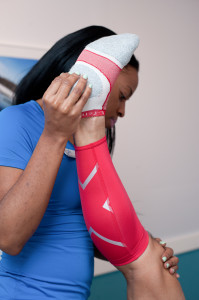
References:
[1] Acute effect of a ballistic and a static stretching exercise bout on flexibility and maximal strength, by Reury Frank Pereira Bacurau,, Gizele De Assis Monteiro, Carlos Ugrinowitsch, Valmor Tricoli, Leonardo Ferreira Cabral and Marcelo Saldanha Aoki. http://www.setantacollege.com/wp-content/uploads/Journal_db/Copy%20of%20ACUTE%20EFFECT%20OF%20A%20BALLISTIC%20AND%20A%20STATIC%20STRETCHING%20EXERCISE%20BOUT%20ON%20FLEXIBILITY%20AND%20MAXIMAL%20STRENGTH.pdf (viewed on 10/4/13)
[2] Acute effects of dynamic stretching exercise on power output during concentric dynamic constant external resistance leg extension, by Taichi Yamaguchi, Kojiro Ishii, Masanori Yamanaka and Kazunori Yasuda. http://clover.rakuno.ac.jp/dspace/bitstream/10659/1401/1/J-2_Yamaguchi.pdf (viewed on 10/4/13)
[3] Does Stretching Improve Performance? A Systematic and Critical Review of the Literature, by Ian Shrier, MD, PhD. http://jurchperformanceeducation.com/wp-content/uploads/2011/05/Does-Stretching-Improve-Performance.pdf (viewed on 10/4/13)
[4] Effects of running, static stretching and practice jumps on explosive force production and jumping performance, by WB Young, DG Behm. Effects of running, static stretching and practice jumps on explosive force production and jumping performance (viewed on 10/4/13)
[5] An Acute Bout of Static Stretching: Effects on Force and Jumping Performance, by Kevin Power, David Behm, Farrell Cahill, Michael Carroll and Warren Young. http://www.setantacollege.com/wp-content/uploads/Journal_db/An%20Acute%20Bout%20of%20Static%20Stretching%20Effects.pdf (viewed on 10/4/13)
[6] The role of stretching in tendon injuries, by E Witvrouw, N Mahieu , P Roosen and P McNair. http://bjsm.bmj.com/content/41/4/224.short (viewed on 10/4/13)
[7] Stretching and Injury Prevention, by Dr Erik Witvrouw, Nele Mahieu, Lieven Danneels, Peter McNair. http://link.springer.com/article/10.2165/00007256-200434070-00003 (viewed on 10/4/13)
[8] Cyclic mechanical stretching modulates secretion pattern of growth factors in human tendon fibroblasts, by M Skutek, M Griensven, J Zeichen, N Brauer, Ulrich Bosch. http://link.springer.com/article/10.1007/s004210100502 (viewed on 10/4/13)
This article/video is for educational purposes only; do not attempt without your physician’s clearance. If you are in pain or injured, see your physician.
Copyright © Vidal Sports LLC 2018





